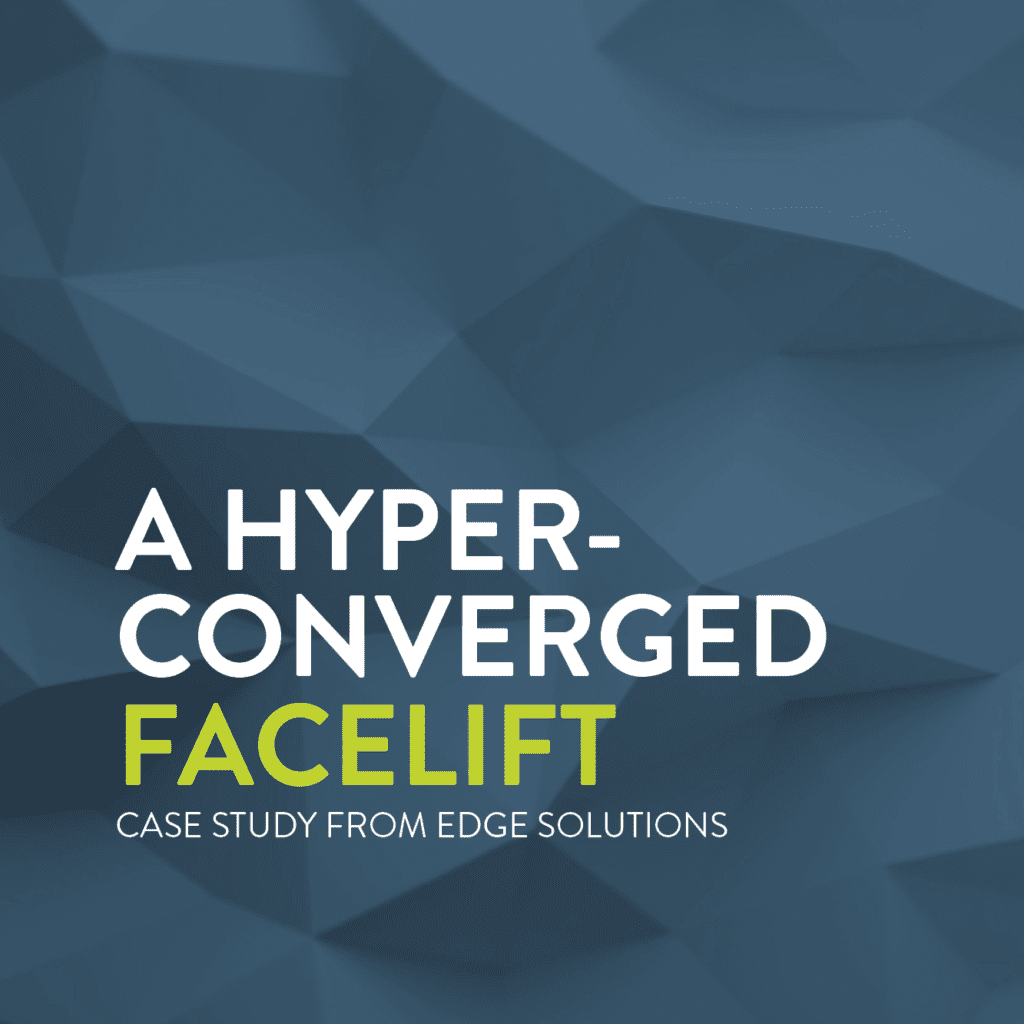Profile:
Business products wholesaler with $5B in revenue, Greater Atlanta.
Need:
Systems and processes with the ability to scale. Consolidate legacy systems and gain efficiencies.
Solution:
Simplified, next-generation hyperconverged infrastructure running on Nutanix.
Outcome:
Significant reduction in data center footprint, rapid deployment, one-click upgrades, centralized management with the ability to recover from a disaster.
Invest in more legacy three-tier architecture—or a next-gen platform?
As a more than 150-year-old company, this Edge Solutions client had built up a huge footprint in the data center with a lot of legacy physical hardware and years of inconsistent processes to maintain workloads and monitor capacity. It was an unpredictable environment just waiting for disaster to strike. After decades of steady sprawl, they needed to consolidate in order to scale.
Edge proposed to collapse multiple racks of legacy equipment—service, storage, and networking—into one rack (plus one for redundancy). Nutanix is the hyperconverged infrastructure (HCI) platform that was chosen. An all-in-one solution delivering one-click upgrades, centralized management, and plug-and-play capacity.
Infrastructure made simple
Legacy systems typically require a huge amount of proprietary tribal knowledge and a lot of manual work to maintain. As a company grows over the years, IT delivers additional capacity to the business with multiple generations of physical and virtual deployments. Automation means that a company can shift valuable human resources to higher value tasks. There have long been solutions to automate various aspects of the daily workload, but now it’s possible to automate whole systems.
It wasn’t only the datacenter that was getting a facelift; Edge was redesigning the client’s network in parallel. The migration had to be completed so that Nutanix could be implemented into the new network infrastructure.
Turn-key installation
Edge worked with the client to stand up the new hardware and migrate off the legacy systems to the Nutanix platform across DevTest and Production. The company went from being 50% virtualized to over 90% virtual. Once the migration was complete, the client was left with two pallets worth of storage, servers, and old array they could dispose of. Once all that old hardware was unplugged, the client noticed a happy byproduct: They went from consuming 85% of their power within the data center to only 25% and were able to forego an expensive HVAC upgrade.
Stop, drop, and roll
We build systems with the ability to recover from the worst-case scenario—with the hope it will never be needed. As it happens, only weeks after the migration to Nutanix was complete, this client suffered a disaster that destroyed their headquarters, data center and warehouse. Before the move to Nutanix, such an extensive disaster would have been game-ending. With Nutanix, not only was the recovery faster and easier, it was possible.
